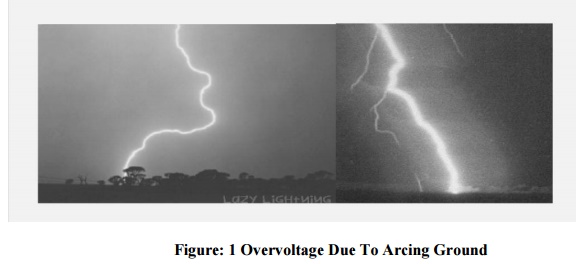Introduction
Examination of over voltages on the power system includes a study of their magnitudes, shapes, durations, and frequency of occurrence. The study should be performed at all points along the transmission network to which the surges may travel.
Types of Overvoltage
• The voltage stresses on transmission network insulation are found to have a variety of Origins.
• In normal operation AC (or DC) voltages do not stress the insulation severely.
• Over voltage stressing a power system can be classified into two main types:
External overvoltage: generated by atmospheric disturbances of these disturbances, lightning is the most common and the most severe. Internal over voltages: generated by changes in the operating conditions of the network. Internal over voltages.
Lightning Over voltages Lightning is produced in an attempt by nature to maintain dynamic balance between the positively charged ionosphere and the negatively charged earth.
Over fair-weather areas there is a downward transfer of positive charges through the global air-earth current. This is then counteracted by thunderstorms, during which positive charges are transferred upward in the form of lightning. During thunderstorms, positive and negative charges are separated by the movements of air currents forming ice crystals in the upper layer of a cloud and rain in the lower part.
The cloud becomes negatively charged and has a larger layer of positive charge at its top. As the separation of charge proceeds in the cloud, the potential difference between the centers of charges ‗increases and the vertical electric field along the cloud also increases. The total potential difference between the two main charge centers may vary from l00 to 1000 MV. Only a part of the total charge-several hundred coulombs is released to earth by lightning; the rest is consumed in inter cloud discharges. The height of the thundercloud dipole above earth may reach5 km in tropical regions.

The Lightning Discharge
The channel to earth is first established by a stepped discharge called a leader stroke. The leader is initiated by a breakdown between polarized water droplets at the cloud base caused by the high electric field, or a discharge between the negative charge mass in the lower cloud and the positive charge pocket below it. (Figure 1.2) As the downward leader approaches the earth, an upward leader begins to proceed from earth before the former reaches earth. The upward leader joins the downward one at a point referred to as the striking point. This is the start of the return stroke, which progresses upward like a travelling wave on a transmission line

